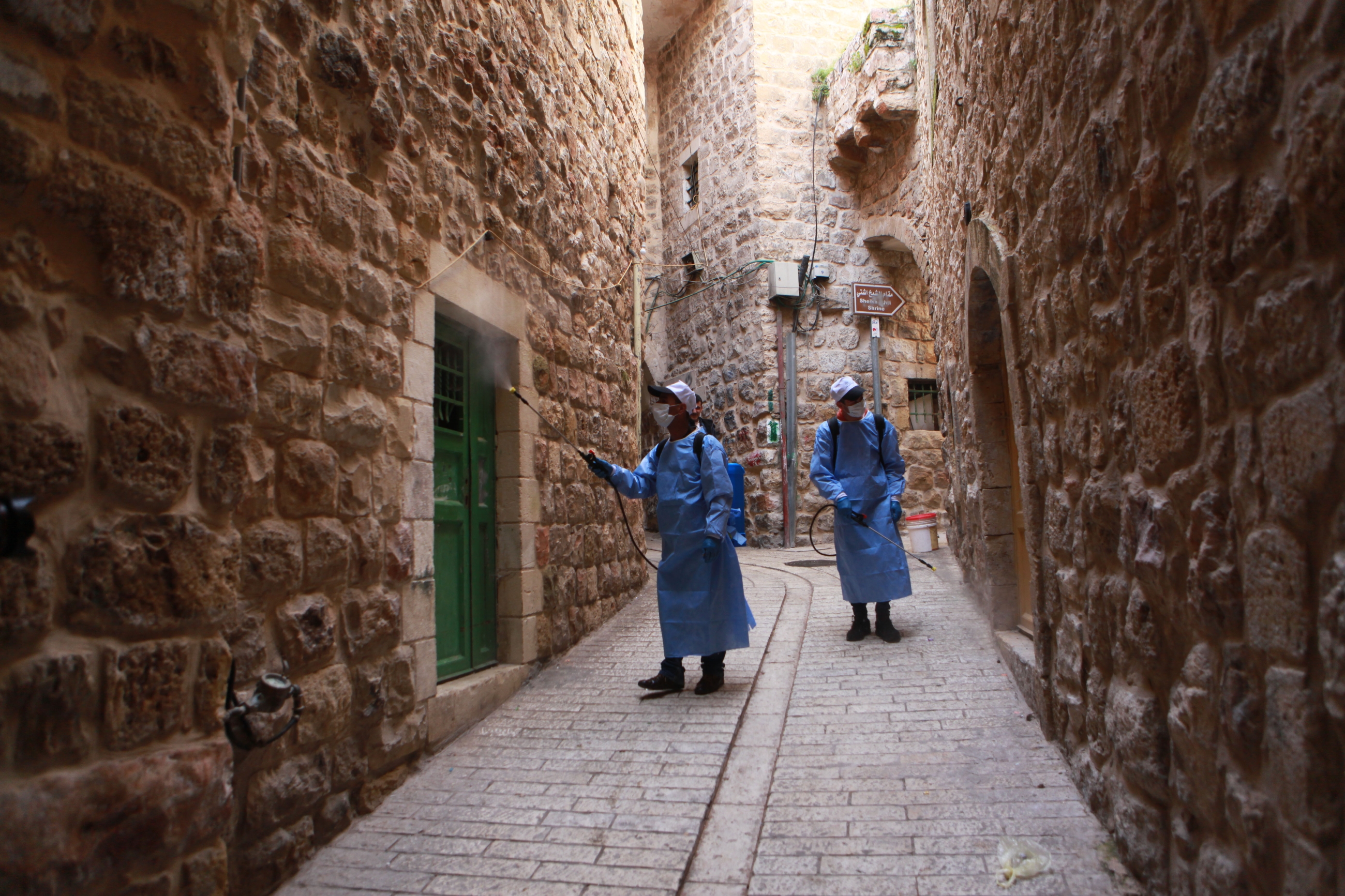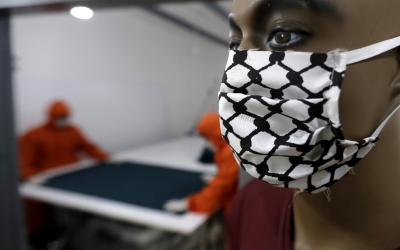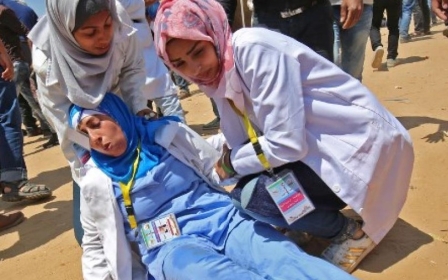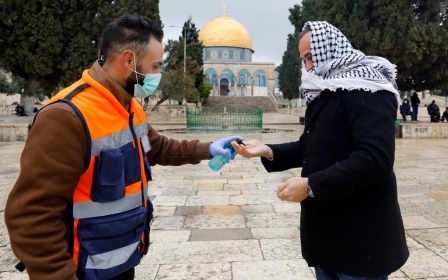Lockdowns, quarantines and social distancing: Remembering Palestine's 1838 plague

The Covid-19 pandemic has left none of us untouched, but the shockwaves have impacted some more than others. Palestine, attempting to prevent an outbreak under conditions of apartheid in the West Bank and a crippling siege on the Gaza Strip, has been no exception.
Palestinians have had to face the Israeli military’s destruction of their coronavirus clinics, violent attacks from settlers carrying Covid-19, and a chronic shortage of equipment in Gaza.
While it might be tempting to use language such as “unprecedented” to describe the current global lockdown measures, humanity has for millennia faced epidemics and pandemics, and tried to counter them with varying degrees of success.
Turbulent period
In Palestine, an outbreak of the plague occurred in 1838, a turbulent period in the country’s history. In 1831, the rebellious governor of Egypt, Muhammad Ali, and his son, Ibrahim Pasha, seized control of Greater Syria, including present-day Palestine/Israel, Lebanon, Syria and part of Jordan. While these regions nominally remained part of the Ottoman Empire, for the next eight years, the real seat of power was Cairo.
New MEE newsletter: Jerusalem Dispatch
Sign up to get the latest insights and analysis on Israel-Palestine, alongside Turkey Unpacked and other MEE newsletters
The new government implemented sweeping reforms. In Palestine, higher taxes and military conscription led to a wide-scale revolt in 1834. After the revolt was militarily crushed, the Egyptian regime exacted a heavy punishment, deporting many Palestinians to other areas for labour and army service.
Robinson's reports of authorities' attempts to prevent travel and the plague's spread have a familiar echo today
In 1837, tragedy followed from natural disaster. A powerful earthquake occurred in the Galilee, causing thousands of deaths and extensive damage to the cities of Safed and Tiberias.
These conditions set the scene for another disaster: the plague. The disease was no stranger to the Ottoman Empire, as historian Nukhet Varlik has stated, with frequent outbreaks occurring throughout the empire’s history.
The 1838 epidemic in Palestine was a test for Egyptian authorities. An account of the epidemic was left by Edward Robinson, an American scholar gathering materials for his Biblical Researches in Palestine. With the help of a missionary who spoke fluent Arabic and their local guides, Robinson recorded aspects of Arab-Palestinian society, including the plague outbreak and lockdown measures, resembling what many of us are now familiar with.
Vulnerable cities
According to Robinson, the two hotspots for the plague were Jaffa and Jerusalem. These cities were particularly vulnerable - the former as Palestine’s main seaport at the time, receiving a steady stream of foreign arrivals; and the latter as the major destination for travellers, tourists and pilgrims visiting Palestine.
Yet, plague cases were also reported in Bethlehem and Nazareth, where Christian sites were closed to stop the spread of the disease (just as they closed earlier this year), and as far as Beirut.
While Robinson himself was lucky not to be personally affected, this was not the case for all travellers: the group accompanying Duke Maximilian Joseph of Bavaria was struck by tragedy. The duke’s doctor died of plague, cared for in his last moments by monks in Nazareth, while a black servant of the duke passed away in a quarantine centre in Saida, Lebanon.
Robinson’s reports of authorities’ attempts to prevent travel and the plague’s spread have a familiar echo today. Around the landscape, officials were posted to limit movement into and out of plague centres.
Robinson found such quarantine guards stationed at Lifta, a Palestinian village west of Jerusalem, depopulated in 1948, as well as outside of Saida and Beirut. But he cast doubt on authorities’ ability to effectively control movement, recording a conversation between his attendants and a guard outside Gaza tasked with stopping travellers from Jaffa from entering the city.
When asked: "Suppose a party from Jaffa tell you they come from Jerusalem; what then?”, the guard allegedly replied: “That is no concern of ours.”
Business at a standstill
Particularly interesting are Robinson’s descriptions of the quarantine and lockdown measures in Jerusalem. Arriving in the city after visiting the Dead Sea, he found “the plague slowly increasing in Jerusalem, and the alarm becoming more deep and general”.
A senior doctor from Alexandria was called, and Robinson predicted that Jerusalem “would soon be shut up, either by drawing a cordon of troops around it, or by closing the gates”. He expressed his worry for the city’s residents who would be “left, not only to suffer the actual horrors of the plague” but also “without fresh air, and without the ordinary supplies of fresh provisions from the country”.
Markets were held at the Damascus and Jaffa gates, surrounded by two layers of fences … Officials kept watch to make sure 'no hands or fingers, on either side… ventured too far'. Social distancing, nineteenth-century style
A lockdown was indeed soon put in place with, according to Robinson, only one day’s notice to residents, and Jerusalem was sealed off in the summer of 1838. Robinson paints a vivid picture of a city where “all business was at a dead stand”, from which the “merchants had departed” and “many of the inhabitants had preferred to quit the city, and were living in the fields or wandering among the villages”.
Robinson expressed his sympathies, writing: “How it was possible for the inhabitants of Jerusalem, and especially for the numerous poorer classes, to hold out under such a state of things, I am unable to conceive.”
Markets were held at the Damascus and Jaffa gates, surrounded by two layers of fences. On the inside, those who remained in Jerusalem gathered to buy food; on the outside, local Palestinian farmers brought their crops; while in between the fences, officials transferred the goods and, once it was “dropped into water or vinegar” in an attempt to disinfect it, money.
They also remained “ever on the watch” to make sure no “hands or fingers, on either side … ventured too far” through the gaps in the fence - social distancing, nineteenth-century style.
A long struggle
Yet, almost unbelievably, some privileged European travellers continued to visit Jerusalem’s holy sites amid the plague epidemic and lockdown. With the permission of the Alexandrian doctor and an escort of guards, a group of English tourists gained access to Jerusalem and saw all they wished to see.
Robinson himself, sensibly noting nothing was worth the “risk and trouble” of entering Jerusalem at the time, camped outside the city walls, from where his friends caught inside the city had conversations with him.
Using a combination of measures with which we are today familiar - lockdowns, quarantines and social distancing - authorities in Palestine were able to stop the plague of 1838. Reflecting on the historical epidemic casts a different light over Palestine’s past from the claims of pro-Israel commentators that before the state of Israel, Palestine was “a land without a people” - a forgotten and neglected region.
Like the current pandemic, the plague of 1838 was a major social and health event, putting intense pressures on Palestinians in towns and cities impacted most by the plague, on local farmers who depended on trade with urban centres, and on the Egyptian government, which imposed strict measures. Remembering the outbreak of 1838 reminds us of the long struggle and determination of the Palestinian people to remain on their land, no matter what challenges they face.
The views expressed in this article belong to the author and do not necessarily reflect the editorial policy of Middle East Eye.
Middle East Eye delivers independent and unrivalled coverage and analysis of the Middle East, North Africa and beyond. To learn more about republishing this content and the associated fees, please fill out this form. More about MEE can be found here.







